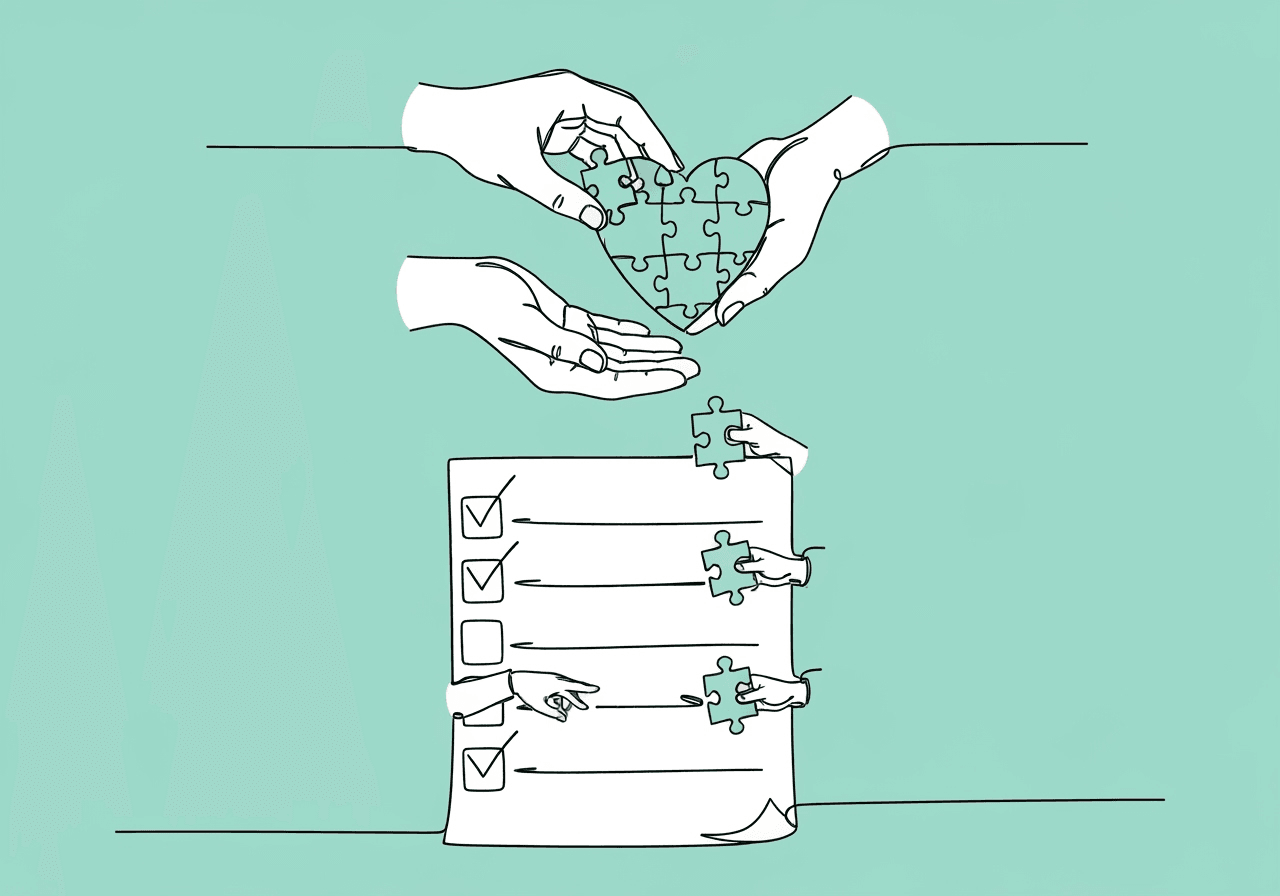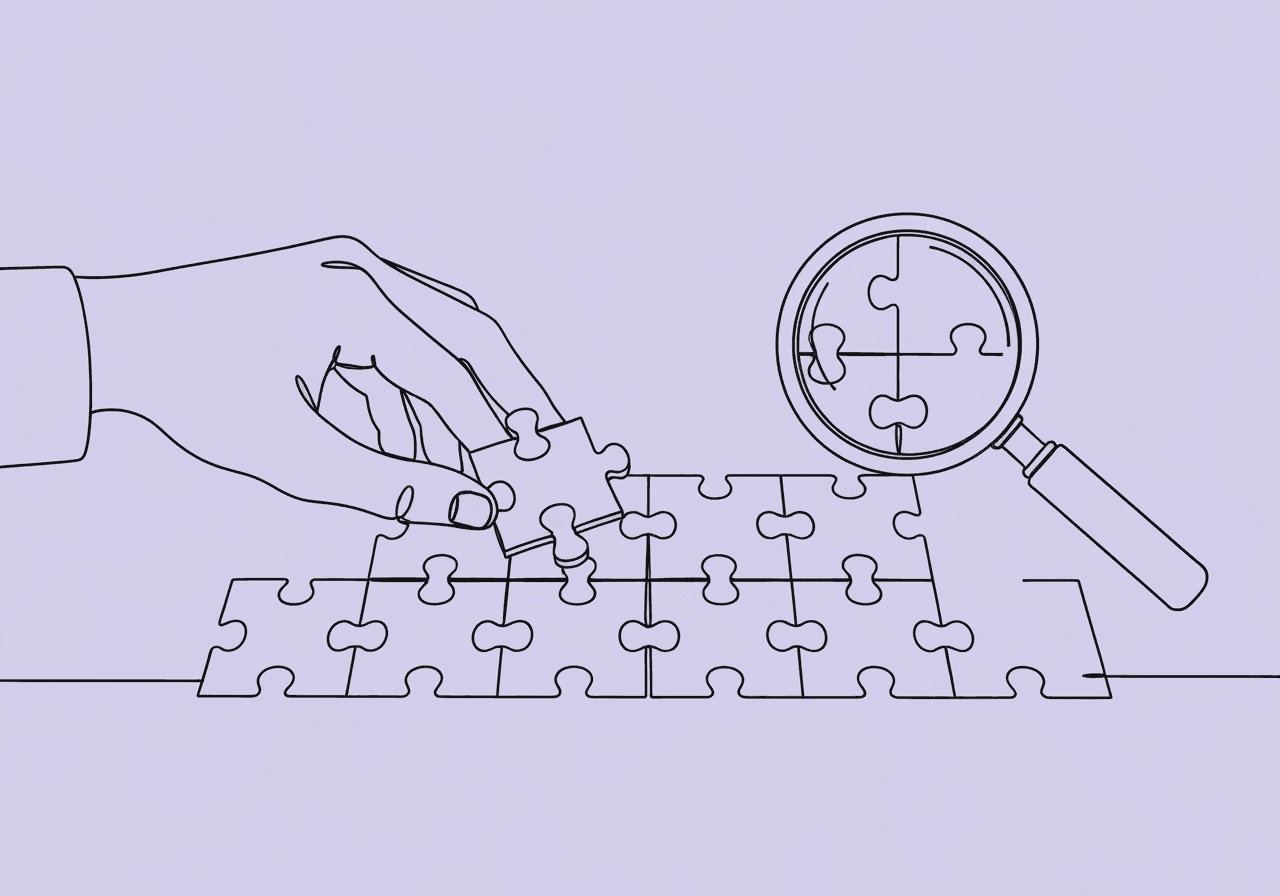CPT 97155 vs 97156 Documentation: Key Differences for BCBAs

Handling CPT coding details can be tricky for BCBAs, where a single documentation oversight could lead to claim denials or compliance audits. In ABA therapy, it's important to accurately distinguish between CPT 97155 and 97156 for billing compliance, especially as payers like Medicaid and private insurers scrutinize services for medical necessity. Misusing these codes not only risks reimbursement but also undermines the ethical standards outlined by the Behavior Analyst Certification Board (BACB). This post breaks down CPT 97155 vs 97156 documentation, equipping you with evidence-based strategies to ensure your notes support every unit billed.
Key Takeaways from This Post:
- Understand the core intent of CPT 97155 (direct intervention) vs. 97156 (caregiver guidance).
- Master the specific documentation elements required for each code to ensure compliance.
- Learn how to apply the correct code in real-world scenarios to prevent claim denials.
- Avoid common billing pitfalls by following best practices from authoritative sources.
By the end, you'll have actionable tools to streamline your BCBA CPT code comparison and protect your practice.
Understanding CPT 97155: Adaptive Behavior Treatment with Protocol Modification
CPT 97155 describes adaptive behavior treatment with protocol modification administered by a physician or other qualified health care professional, billed in 15-minute increments. According to the ABA Coding Coalition, this code applies when a BCBA engages directly with the client to observe behaviors in real-time and adjust the treatment protocol accordingly [1]. The focus is on therapeutic intervention where the qualified professional (QHP) makes on-the-spot changes to interventions based on the client's response, ensuring the treatment remains individualized and effective.
Who administers it? Only QHPs like BCBAs or BCaBAs under supervision can bill 97155. It requires face-to-face interaction with the client, either one-on-one or while simultaneously directing a behavior technician. Settings include clinical environments, homes, or telehealth where the BCBA can actively monitor and modify.
Key documentation elements must justify the medical necessity and real-time adjustments. Your notes must include:
- Session details, including date, start and end times, and duration in 15-minute units.
- The specific targeted goals from the behavior intervention plan (BIP).
- A clear rationale for any protocol modifications—for instance, if a prompt hierarchy was faded faster due to the client's rapid acquisition.
- Progress data collected before and after the change, such as graphs or raw data showing response rates, latency, or frequency to demonstrate clinical decision-making.
For example, if a BCBA observes a client struggling with a discrete trial teaching (DTT) program and switches to errorless learning mid-session, the note must explain the observation, the modification, and the client's immediate response. According to supplemental guidance from the Association for Behavior Analysis International (ABAI, 2019), indirect activities like post-session protocol writing are bundled into this code and not billed separately [2]. Always link interventions back to the client's diagnosis, such as autism spectrum disorder (ASD), to align with payer requirements [1].
Failure to capture these elements can lead to denials, as payers require evidence that 97155 wasn't just supervision but active, modifying intervention.
Decoding CPT 97156: Family Adaptive Behavior Treatment Guidance
On the other hand, CPT 97156 covers family adaptive behavior treatment guidance, also administered by a QHP in 15-minute units. This code targets performance-based training for caregivers or guardians to implement behavioral strategies at home, fostering generalization of skills beyond therapy sessions. The ABA Coding Coalition emphasizes that it involves face-to-face guidance with the caregiver(s), with the client present or not, but the primary focus remains on equipping families to support the treatment plan [1].
Administration falls solely to QHPs like BCBAs, without involvement from technicians. Common settings are family homes, clinics, or virtual platforms, where the emphasis is on collaborative, caregiver-driven sessions. Unlike direct client work, this code supports ABA billing compliance by promoting family involvement. Research shows that parent-implemented interventions enhance long-term outcomes for children with Autism Spectrum Disorder, making this code essential for holistic care [9].
Documentation for 97156 must highlight the training objectives and caregiver participation to prove the service's value. Your notes should capture:
- Session details like date, time, duration, and attendees (e.g., parents only or with the child).
- The specific content delivered, such as teaching reinforcement schedules, crisis intervention techniques, or data collection methods tied to the BIP.
- Clear objectives like "train parent on implementing differential reinforcement of alternative behavior (DRA)."
- Measures of caregiver progress—for example, did they demonstrate the skill with 80% accuracy?
Notes should capture the caregiver's performance, any feedback provided, and plans for follow-up. For instance, if a BCBA models how to use visual schedules for a child with ASD, document the demonstration, the parent's practice trials, and observed improvements in their implementation. Per ABAI guidelines (2019), this code cannot be used for general family counseling; it must be directly linked to adaptive behavior treatment [2]. Payers often require evidence of how the guidance integrates into daily routines, so reference the client's goals and any modifications to caregiver strategies [1].
Thorough notes here prevent audits by showing how 97156 contributes to holistic care, distinct from routine check-ins.
CPT 97155 vs 97156 Documentation: A Side-by-Side Comparison
To master BCBA CPT code comparison, a clear breakdown of differences is essential for accurate billing and documentation. Below is a table summarizing the core distinctions, drawn from authoritative sources like the ABA Coding Coalition and state Medicaid policies.
| Aspect | CPT 97155: Adaptive Behavior Treatment with Protocol Modification | CPT 97156: Family Adaptive Behavior Treatment Guidance |
|---|---|---|
| Primary Focus | Direct client intervention with real-time protocol adjustments | Caregiver training on behavioral strategies |
| Provider Role | BCBA/QHP actively modifies treatment during session, may direct technician | BCBA/QHP provides guidance to caregivers, client optional |
| Setting/Interaction | Face-to-face with client required; one-on-one or supervised | Face-to-face with caregivers; client may or may not be present |
| Billing Requirements | 15-minute units; cannot bill with 97153 by same provider in same session [1] | 15-minute units; concurrent billing possible if separate from client services [3] |
| Documentation Essentials | Session data, targeted goals, modification rationale, pre/post data, client response | Training objectives, content taught, caregiver performance, integration into routines |
| Co-billing Restrictions | Bundles indirect planning; no overlap with non-modifying supervision | No direct client modification; separate from 97155 if client-focused [2] |
This comparison highlights how 97155 emphasizes clinical intervention, while 97156 prioritizes family empowerment. For ABA billing compliance, always verify payer-specific rules—for example, Texas Blue Cross Blue Shield (2024) prohibits concurrent 97155 and 97156 by the same provider unless distinct services [4]. Use this framework to audit your notes and avoid common pitfalls like under-documenting rationales.
For more on individual codes, check our Master CPT 97155 Docs: Template & Tips or CPT 97156 Documentation Requirements.
Use Case Scenarios: When to Bill CPT 97155 vs. 97156
Applying these codes in practice requires scenario-based thinking to ensure ethical and compliant billing. Consider a BCBA working with a 5-year-old client diagnosed with ASD who exhibits elopement behaviors.
Scenario for CPT 97155: BCBA Modeling and Modifying an RBT Session During a home session, the RBT implements a BIP using blocking and redirection for elopement. The BCBA observes the client escaping three times in the first 15 minutes and modifies the protocol on-site—increasing the proximity of barriers and adding a verbal prompt. Documentation includes: timestamped observations (e.g., "At 10:15 AM, client eloped during transition; baseline rate 3/15 min"), the rationale ("Escalation due to low motivation; added token economy"), and post-modification data ("Rate reduced to 0/15 min after adjustment"). This justifies one unit of 97155, as the BCBA's direct involvement drove the change. According to Nebraska Total Care's policy (2024), such real-time data supports medical necessity [5].
Scenario for CPT 97156: One-on-One Parent Psychoeducation In a separate clinic visit without the client, the BCBA trains the parents on generalizing elopement interventions at home. The session covers teaching noncontingent access to preferred items and role-playing responses. Notes detail: objectives ("Parent to identify antecedents for elopement"), content ("Demonstrated DRA procedure; parent practiced 4 trials"), and progress ("Parent achieved 90% fidelity"). Billed as two units of 97156, this focuses on caregiver skill-building, not client modification. The ABA Coding Coalition (2023) notes this code is ideal for performance-based training without direct patient contact [1].
In mixed sessions, bill based on the dominant activity—97155 if modifications occur with the client, 97156 if purely caregiver-focused [1]. For related supervision insights, see our guide on BCBA Ethical Supervision Documentation. These examples underscore how precise documentation ties services to outcomes, reducing denial risks.
Frequently Asked Questions
What are the key differences in documentation requirements between CPT 97155 and 97156?
Documentation for CPT 97155 must include real-time protocol modifications, client response data, and rationale for changes, as per ABAI guidelines (2019) [2]. In contrast, CPT 97156 focuses on caregiver training objectives, skills taught, and performance feedback, without direct client intervention details. Both require session times and linkages to the treatment plan, but 97155 emphasizes clinical data like pre/post metrics, while 97156 highlights family integration, ensuring payers see distinct medical necessities [1].
How should BCBAs document client response to modifications for CPT 97155?
BCBAs should record specific, observable data such as behavior frequency or latency before and after adjustments, along with the clinical rationale. For example, note "Prompt delay increased from 5 to 10 seconds; acquisition rate improved from 40% to 75% over 15 minutes." This aligns with ABA Coding Coalition standards (2023), proving the modification's effectiveness and justifying billing [1]. Signatures and timestamps are mandatory for audit trails.
What are the specific criteria for billing CPT code 97155?
Billing requires the BCBA's direct engagement in protocol modification with the client present, in 15-minute units, per the American Medical Association's CPT guidelines. It cannot be used for routine supervision without changes or indirect planning. Concurrent billing with technician codes like 97153 is restricted by the same provider, as outlined in state policies like Florida Medicaid (2023) [6]. Verify telehealth eligibility with payers.
Can CPT 97155 and 97156 be billed concurrently?
Yes, if provided by different professionals or in distinct portions of the session—e.g., a BCBA bills 97155 for client work while another handles caregiver training under 97156. However, the same BCBA cannot bill both simultaneously for overlapping time, per ABA Coding Coalition FAQs (2023) [1]. Documentation must clearly separate services to avoid denials, as seen in UnitedHealthcare policies (2024) [7].
What are common pitfalls in documenting CPT 97155 and 97156?
A frequent error is vague notes lacking rationale or data for 97155 modifications, leading to audits, while 97156 often misses caregiver progress metrics. Both codes risk denials without tying to the BIP or diagnosis. Brellium (2024) recommends using templates to capture times, objectives, and outcomes consistently, ensuring compliance with BACB ethics [8].
How do reimbursement rates for CPT 97155 and 97156 vary by payer?
Rates vary significantly by payer. For example, some government payers like Nebraska Medicaid have set rates that may average $30-50 per unit for both codes [5]. Other government-funded programs like TRICARE publish their own maximum allowed rates [10]. Private insurer reimbursement schedules are often different and may be higher for 97155 due to its direct intervention focus. Always check individual payer fee schedules, as modifiers like GT for telehealth can also affect approval. No universal rate exists—so you must verify annually for ABA billing compliance.
In summary, mastering CPT 97155 vs 97156 documentation hinges on precise, evidence-based notes that reflect their unique intents: real-time client adjustments for 97155 and caregiver empowerment for 97156. By aligning your practices with ABA therapy billing guidelines from sources like the ABA Coding Coalition and ABAI, you mitigate compliance risks and enhance service quality. According to professional standards, thorough records not only secure reimbursements but also support ethical ABA delivery [1] [2].
Next steps: Audit your last five session notes using the comparison table above. Develop customizable templates for each code—consider tools like Praxis Notes for AI-assisted creation. Finally, consult your state's Medicaid manual or a billing expert for payer-specific nuances. This approach ensures your BCBA practice thrives amid evolving regulations.
[1]: ABA Coding Coalition FAQs (2023) [2]: ABAI Supplemental Guidance (2019) [3]: AnnexMed ABA CPT Codes (2024) [4]: BCBS Texas ABA Policy (2024) [5]: Nebraska Total Care ABA Requirements (2024) [6]: Florida AHCA Behavior Analysis FAQ (2023) [7]: UnitedHealthcare ABA Program (2024) [8]: Brellium CPT 97155 Guide (2024) [9]: Effects of Parent-Implemented Interventions on Outcomes of Children With Autism Spectrum Disorder: A Systematic Review and Meta-analysis [10]: ABA Maximum Allowed Rates Effective May 1, 2024
Popular in CPT Codes & Billing
- 1
2025 ABA Billing Updates: Essential Guide for RBTs
1,5538 min read - 2
CPT Code 97153 ABA: Complete 2025 Billing Guide for RBTs & BCBAs
1,0774 min read - 3
CPT Code 97153: Complete Guide for RBTs
1,0649 min read - 4
Master ABA CPT Codes 97153-97158: Avoid Costly Audit Findings in 2025
6105 min read - 5
Master CPT 97155 Docs: Template & Tips for BCBAs
4529 min read
Popular in CPT Codes & Billing
- 1
2025 ABA Billing Updates: Essential Guide for RBTs
1,5538 min read - 2
CPT Code 97153 ABA: Complete 2025 Billing Guide for RBTs & BCBAs
1,0774 min read - 3
CPT Code 97153: Complete Guide for RBTs
1,0649 min read - 4
Master ABA CPT Codes 97153-97158: Avoid Costly Audit Findings in 2025
6105 min read - 5
Master CPT 97155 Docs: Template & Tips for BCBAs
4529 min read
Related Resources
Explore more helpful content on similar topics

CPT 97155 vs 97156: BCBA Documentation Guide
Learn the differences between CPT 97155 vs 97156 documentation for BCBAs. Discover key elements for protocol modifications, caregiver training, and billing compliance to ensure medical necessity and avoid pitfalls.

BCBA CPT 97156 Documentation: 10-Point Checklist
Master BCBA CPT 97156 documentation using our essential 10-point checklist. Boost parent training compliance, perfect 97156 session notes, and safeguard against claim denials by proving medical necessity with caregiver data.

CPT 97155 Documentation Narrative: A BCBA Guide
Master CPT 97155 documentation narratives for BCBA protocol modifications. Get step-by-step guidance on data-driven justifications, billing compliance, and ABA therapy standards to ensure accurate reimbursements.